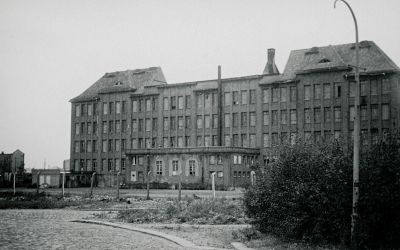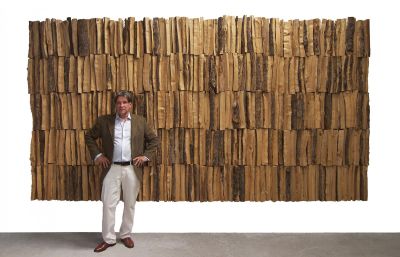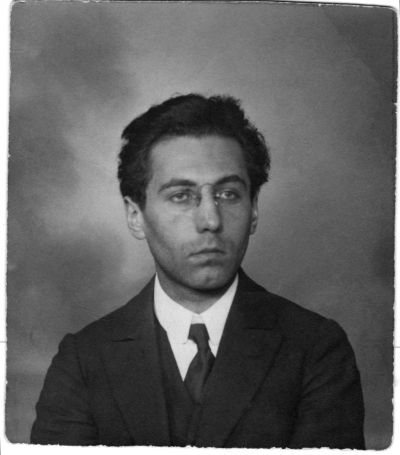Adam Szymczyk and documenta 14
Mediathek Sorted











































![Ill. 36: Miriam Cahn - KOENNTEICHSEIN [COULD BE ME] Ill. 36: Miriam Cahn - KOENNTEICHSEIN [COULD BE ME] - 2015-17. installation, various materials and techniques (including scan, watercolour, oil on paper, wood, canvas). Documenta Hall](/sites/default/files/styles/width_100_tiles/public/assets/images/36_miriam_cahn.jpg?itok=cukc4m2l)

















Adam Szymczyk - Hörspiel von "COSMO Radio po polsku" auf Deutsch











































![Ill. 36: Miriam Cahn - KOENNTEICHSEIN [COULD BE ME] Ill. 36: Miriam Cahn - KOENNTEICHSEIN [COULD BE ME] - 2015-17. installation, various materials and techniques (including scan, watercolour, oil on paper, wood, canvas). Documenta Hall](/sites/default/files/styles/width_100_tiles/public/assets/images/36_miriam_cahn.jpg?itok=cukc4m2l)


















Artists from outside Europe predominate within the Documenta Halle. In glass cases, on the wall and in labyrinthine rooms on the periphery of the entrance hall where one would normally expect a souvenir shop or the cloakroom, artists from Mali, Igo Diarra (*1968 Bamako, Ill. 30a, b) and La Medina present LP covers, documents, trophies, clothing, musical instruments, photographs and other devotional articles on the final concerts of the most famous of all African jazz musicians, Ali Farka Touré (1939-2006). Only in the exhibition can we discover that his music was “full of important messages for Africa”: precisely what these messages were remains unknown. A side programme includes a revival concert with musicians from the band playing in the Kassel Henschel Hallen. Also in the entrance hall visitors can see masks by the recently deceased Canadian Indian chief, Beau Dick (1955-2017, Ill. 31): they are not only contemporary and artistic but also have a ceremonial character. The sculptor from the Kwakwaka'wakw tribe in British Columbia made a name for himself in 2013 with his protest actions against colonialism and capitalism.
Large format works and installations compete with each other in the main hall: these include a somewhat loveless collection of sound alongside eight paintings by the Senegalese painter, curator and activist, El Hadji Sy (*1954 Dakar, Ill. 32a, b); sound instruments made up of fragments from refugee boats by the Mexican composer, sound and performance artist, Guillermo Galindo (*1960 Mexiko city, Ill. 33a-c); the “Quipu” (2017), a work that reaches up to the ceiling by the Chilean poet, painter and object artist, Cecilia Vicuña (*1948 Santiago de Chile, Ill. 34) – this is a purple coloured soft sculpture made of meshes of wool, reminiscent of the eponymous ancient Peruvian fixtures made of laces, knots and coloured thread that were intended to document events; a hanging installation made of Indigo fibre textiles by the artist, Aboubakar Fofana (*1967 Bamako, Ill. 35) – he was born in Mali and grew up in Paris – whose work aims to revive lost African traditions and techniques and bring them into harmony with nature. “For him the natural world combined with our human skills is simultaneously the starting point and finishing point for us all.”[37] (Johanna MacNaughtan)
Over against this, works in the corridors and the side cabinets of the Documenta-Halle , come across as a total anachronism: the fuzzy painting attempts by the Swiss graphic artist and action artist, Miriam Cahn (*1949 Basel, Ill. 36), who works global catastrophes and personal tragedies into intuitive dream images; the blocky structured panels reminiscent of American colour Field painting, by Stanley Whitney (*1946 Philadelphia, Ill. 37); and finally the installation made between 2003 and 2011 and consisting of simple materials like desk boards and sticking tape by Marie Cool (*1961 Valenciennes) and Fabio Balducci (*1964 Ostra, Ill. 38). This is a link to the Arte Povera of the 1970s that only become a current work of art in performance. According to Pierre Bal-Blanc: “The duo’s work on processes of perception calls into question normative ways of behaviour, attitudes and values, especially the concept of temporality“.[38]
[37] Johanna Macnaughtan: Aboubakar Fofana, on the website of documenta 14: http://www.documenta14.de/de/artists/13516/aboubakar-fofana, also in documenta 14: Daybook, Munich 2017, pages on 22. May
[38] Pierre Bal-Blanc: Marie Cool Fabio Balducci, on the website of documenta 14: http://www.documenta14.de/de/artists/13710/marie-cool-fabio-balducci, also in documenta 14: Daybook, Munich 2017, pages on 3. September






















































































